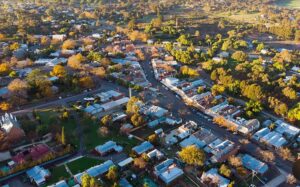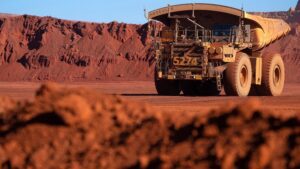AGL, Australia’s biggest coal generator and climate polluter, has advanced the closure dates of its last two remaining coal generators by two and three years, but the advanced closure dates still fall well outside of most market assumptions and what’s needed to address climate change.
The company announced on Thursday, along with its interim results, that under new “climate commitments” it will bring forward the closure of the Bayswater black coal generator in NSW to no later than 2033 (it was previously 2038), and the Loy Yang A brown coal generator in Victoria to 2045 (previously 2048).
“As a result, emissions from its soon to be created Accel Energy’s spin-off will be reduced by a further 90 million tonnes over the period FY23 to FY50, compared to modelled outcomes of our previous commitments.”
AGL is already committed to the closure of the Liddell coal fired generator in NSW in 2023, but its new deadlines remain well outside the assumptions of virtually everyone in the market, and particularly the Australian Energy Market Operator’s latest planning blueprint, the Integrated System Plan.
That ISP document found that the energy market operator was agreed that its “Step Change” scenario was the most likely outcome, and this assumed a closure of all brown coal generators, including Loy Yang A, by around 2032.
Its “hydrogen superpower” scenario, the only one that actually conforms to a 1.5°C scenario, assumes all coal generation in Australia’s main grid is closed within a decade, including Bayswater.
That, many experts believe, could become the new “central” scenario within a few years, particularly given the pace of new green hydrogen and green energy export investments led by the likes of Andrew Forrest, Mike Cannon-Brookes, and CWP Global.
NSW transmission company Transgrid has also outlined a scenario where NSW sources 90 per cent of its electricity needs from renewables by 2030, while the state government assumes that four out of the five remaining coal plants also close within a decade, and possibly all of them.
Environmental groups were dismissive of AGL’s announcement, with Greenpeace describing it as a “token” effort.
“Loy Yang A and its attached brown coal mine pump out over 20 million tonnes of climate pollution every year,” said Glenn Walker, senior campaigner at Greenpeace Australia Pacific.
“Keeping this brown-coal blight on our climate open until 2045 will produce a further 460 million tonnes of toxic emissions, equivalent to the pollution from over 100 million cars, putting Australia’s chance at a safer climate future in jeopardy.
“Renewables are driving Australia’s electricity prices down to rank amongst the cheapest in the world, and delaying coal’s inevitable exit will be costly,” Walker said.
“With market and environmental pressure building to a head, and consumers increasingly rejecting dirty power, it’s time for AGL to catch up with the rest of the market and make the switch to cleaner energy.”
Environment Victoria said AGL’s plan to keep Loy Yang power station operating, and polluting, for another 23 years was “completely unacceptable.”
The decision by AGL also defies moves by major customers – including the Tomago smelter in NSW, the Portland smelter in Victoria (and also the Boyne island smelter in Queensland) – to switch to renewable energy supplies over the next decade to lower costs and meet customer demand for low carbon products.
But AGL is clearly hedging its bets as it tries to effect a demerger that seeks to unwind its decision to go “all-in” with black and brown coal nearly a decade ago, and plot a new business plan for the future.
It is trying to effect a merger which places the coal assets in a newly named company called Accel, and then seeks to pitch AGL as a modern green energy company focused on renewables and household demand for rooftop solar, batteries and electric vehicles. But it doesn’t want to scare Accel investors completely.
Like EnergyAustralia, it accepts that coal fired generators will close, as soon as sufficient renewable energy capacity, and the associated storage and transmission needs, are built.
But they are also playing a complex game of chicken, accepting that coal generators will close once new capacity is built, but pushing for special compensation payments and guarantees under the threat of early closures if the business case is poor.
This is complicated by the lingering uncertainty about how quickly new capacity will be rolled out, given the slow regulatory process, the lack of commitment or a national plan from the federal government, and despite the efforts of various state governments.
“For Accel Energy, there is no doubt that coal fired generation across the entire system will exit earlier than previously believed, enabling a faster decarbonisation pathway,” AGL CEO Graeme Hunt said in the presentation.
“However, for this to happen, AEMO’s recent draft ISP estimates that approximately $70 to $90 billion worth of investment in transmission and generation will be required.”
Hunt later told analysts that the ISP was “only a draft” and did not conform with its view of how the market would develop.
“With this scale of change, these closures must not happen outside of a co-ordinated plan across governments, industry, regulators and the community,” he said in the statement. “Without this we create market uncertainty and put at risk energy reliability and affordability.”
AGL on Thursday reported a statutory profit of $555 million. That included benefits from a bounce in forward prices and large scale generation certificates, allowing it to reverse some of the previous write-downs of long term off take agreements, particularly with wind and solar farms.
Ironically, AGL admitted that those jumps in forward prices were at least partially driven by problems at the Callide coal generator in Queensland (which exploded early last year), and ongoing issues at Yallourn, including flooding, and issues at its own Liddell plant.
Its underlying earnings – excluding these and other gains from changes in the value of various financial instruments – remained weak, falling 41 per cent to $194 million.
(More to follow)








